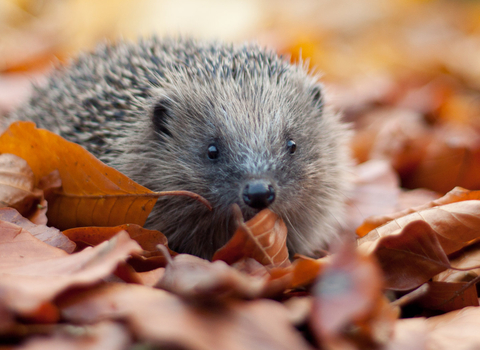The Wildlife Trusts have raised almost £8 million just six months after launching their 30 by 30 ambition to kickstart nature’s recovery across 30% of land by 2030. Funds will buy land to provide new homes for wildlife and allow nature to thrive in increasing abundance across wilder, joined-up places. The plan is to reverse decades of steep wildlife declines and threats to the natural world.
Today The Wildlife Trusts unveil ten new projects which are contributing to the drive to help nature fight back – including converting an ex-golf course into an urban oasis for bees and butterflies, turning degraded arable land into heathland, securing a future for historic wildflower meadows and rewilding a village.
Sir David Attenborough and members of the public are backing the call for 30 by 30 – The Wildlife Trusts have been humbled by the way in which the crusade has caught the popular imagination. People want change.
Sir David Attenborough, President Emeritus of The Wildlife Trusts, says:
“If given a chance – nature is capable of extraordinary recovery. The Wildlife Trusts’ campaign to secure 30 per cent of our land and sea for nature’s recovery by 2030 offers us the vision and level of ambition that is urgently needed to reverse the loss of nature, and so improve all our lives.
“We are facing a global extinction crisis which has implications for every one of us. It’s tempting to assume that the loss of wildlife and wild places is a problem that’s happening on the other side of the world. The truth is that the UK is one of the most nature depleted countries on the planet and the situation is getting worse.”
The Wildlife Trusts’ new schemes are additions to a growing list of nature recovery projects that will put new land aside for nature as well as repair and link-up existing, fragmented, wild areas to enable wildlife to move around – some of these are still fundraising. The aim is to bring nature everywhere Including to the places where people live. The new schemes include:
- Transforming 42-acre ex-golf course in Carlisle into an urban bee and butterfly oasis
- Restoring 95 acres arable fields back to heathland for nature in Worcestershire
- Reviving ice-age ponds and expanding heathland across 140 acres, Norfolk
- Quadrupling a nature reserve to help the rare marsh fritillary butterfly, Wiltshire
- Breathing life into 20 urban nature areas to benefit people and wildlife, Tyne & Wear
- Piloting eco-friendly ‘Naturehoods’ by creating habitats in Lincolnshire communities
- Securing a future for 14 acres of rare wildflower meadows in Herefordshire
- Improving 30 acres historic northern hay meadows for wildflowers in Cumbria
- Buying 12 fabulous acres of unsprayed fields for yellow mountain pansy, Shropshire
- Managing traditional Rhos pasture for butterfly conservation, Radnorshire





